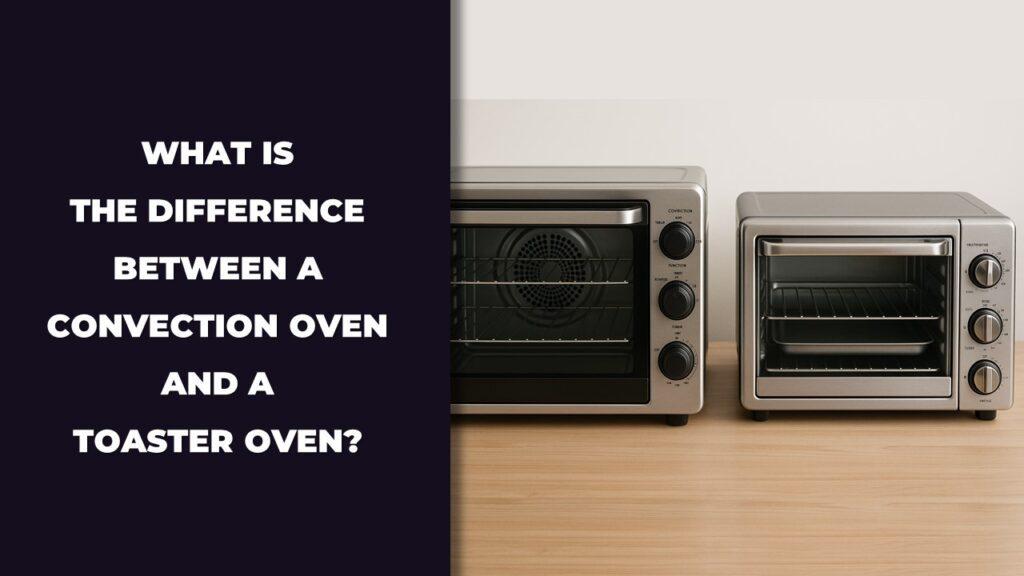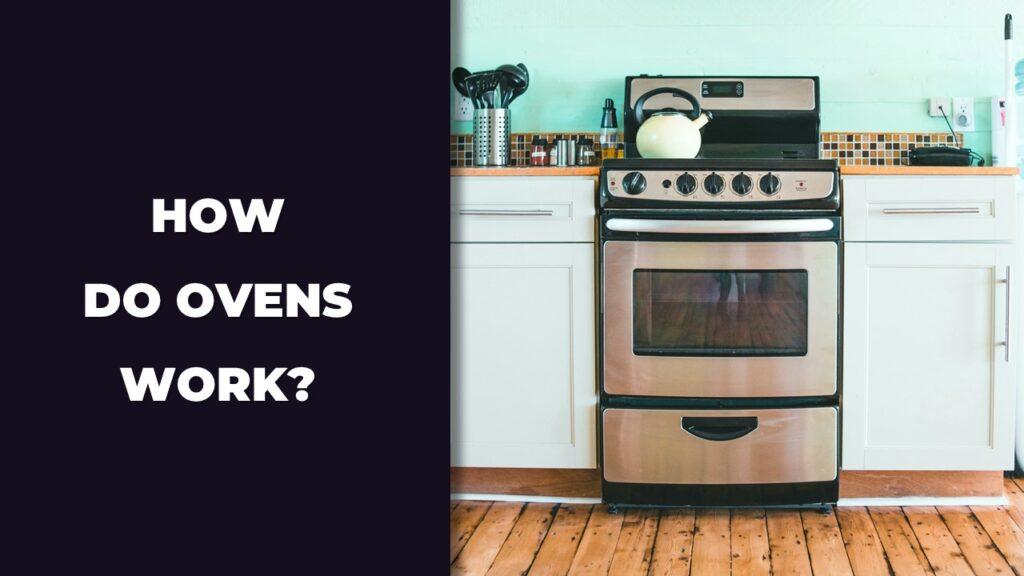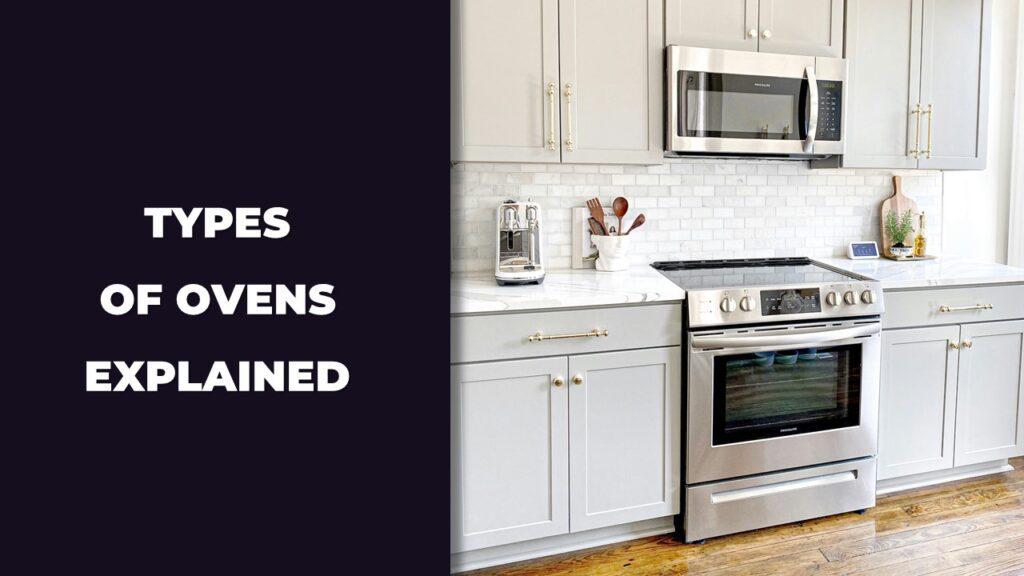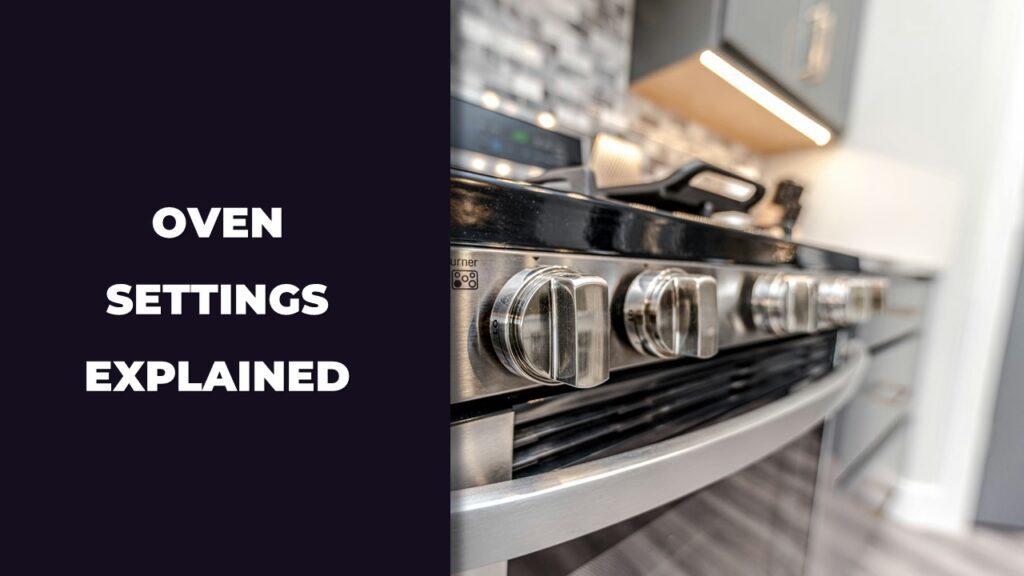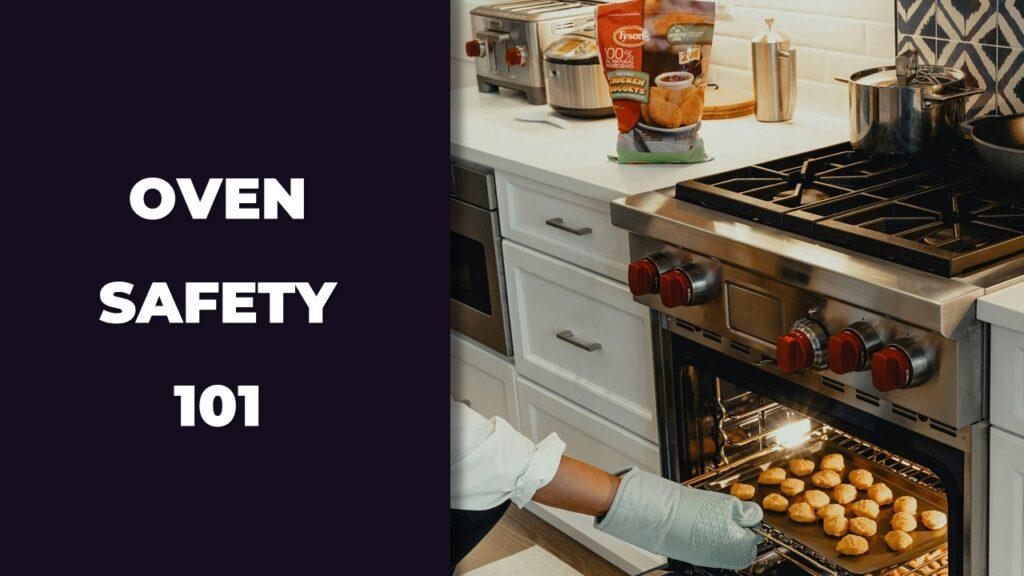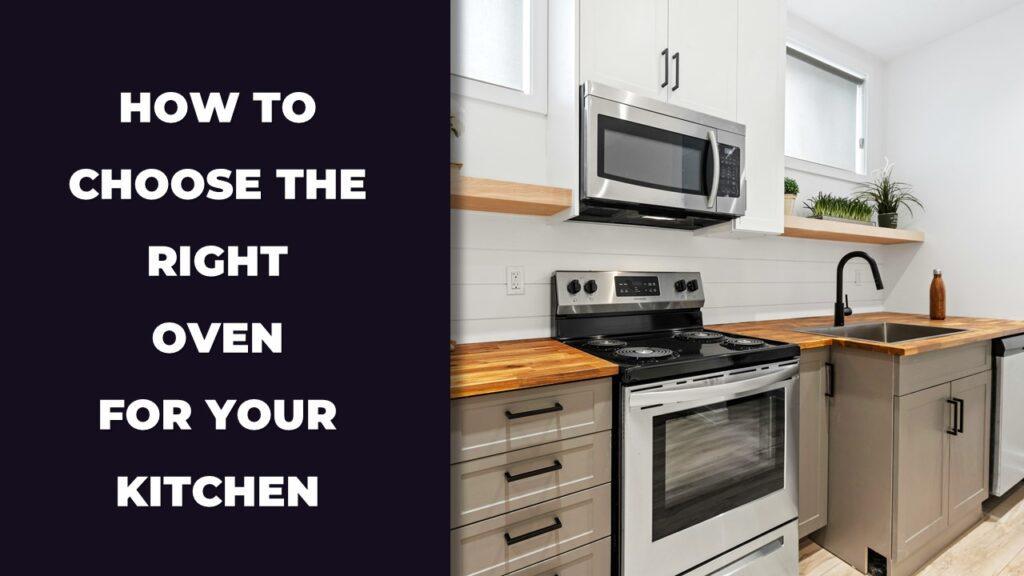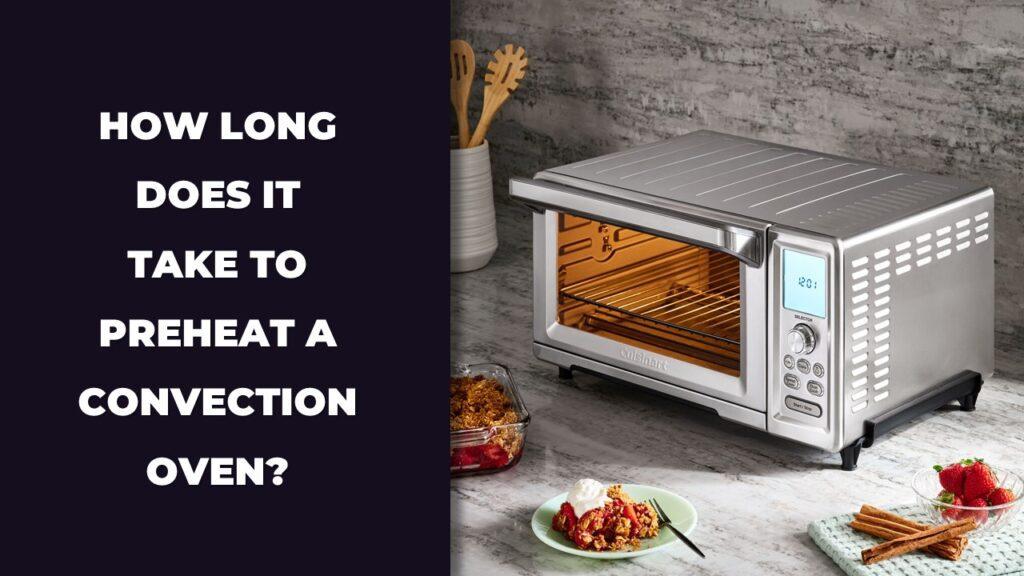
A convection oven usually takes 5 to 10 minutes to preheat to 350°F (175°C). That’s faster than a regular oven, thanks to its built-in fan that pushes hot air around the food. The exact time depends on how hot you want it, the size of the oven, and whether it’s brand new or a bit older.
In this article, we’re going to walk you through what affects preheat time, how convection ovens compare to standard ones, and when you should start cooking. If you’ve ever wondered whether your oven’s beep is actually telling the truth, we’ve got you covered.
What Does Preheating a Convection Oven Mean?
Preheating a convection oven means giving it a few minutes to reach the exact cooking temperature before putting your food in. This helps the oven heat up evenly, so your food cooks properly from the very beginning. With a convection oven, the built-in fan pushes hot air around the oven to speed up the process and keep the temperature consistent.
If you skip preheating, your food starts cooking in a cold or uneven environment, which can lead to soggy bottoms, undercooked centers, or overcooked edges. This matters even more when baking cookies, cakes, or anything that depends on precise timing and temperature.
Preheating isn’t just about waiting for a beep. It’s about making sure the oven cavity is fully hot and stable. Even though convection ovens heat faster than traditional ones, giving it a few extra minutes can make a big difference in how evenly and quickly your meal turns out.
Average Preheat Times for Convection Ovens
A convection oven typically takes 5 to 10 minutes to preheat to 350°F (175°C). The exact time depends on the oven’s size, temperature setting, and overall condition. Higher temperatures or older ovens may take slightly longer, while newer models with quick-preheat features might be faster.
Below, we’ll look at how long preheating takes at different temperatures and how convection ovens stack up against conventional models when it comes to heating speed.
How Many Minutes to Preheat a Convection Oven by Temperature
- 250°F (120°C): About 4–6 minutes
- 300°F (150°C): Around 5–7 minutes
- 350°F (175°C): Typically 6–10 minutes
- 400°F (200°C): Roughly 10–12 minutes
- 450°F (230°C): Can take 12–15 minutes
The higher the temperature, the longer it usually takes. If your oven has a preheat indicator light or a beep, you can rely on that—but for precision baking, it’s worth waiting an extra minute or two after the signal.
Comparison of Convection and Conventional Oven Preheat Times
Convection ovens heat up faster because they use a fan to move hot air around the inside. This speeds up the process and distributes heat evenly across the cavity.
Here’s a general comparison:
- Convection Oven: 5–10 minutes to 350°F
- Conventional Electric Oven: 10–15 minutes to 350°F
- Convection Microwave Oven: 4–8 minutes (smaller space = faster heating)
The fan in a convection oven doesn’t just cook faster—it also helps preheat more efficiently. That’s one reason many people prefer convection models, especially for busy kitchens or time-sensitive recipes.
Key Factors That Affect Convection Oven Preheat Time
A convection oven usually preheats in 5 to 10 minutes, but that time can stretch or shrink depending on a few real-life variables. The oven’s size, age, power source, and even the temperature of your kitchen can all influence how fast it gets to cooking temperature. Knowing these factors can help you decide if your oven is working normally or falling behind.
Many of these variables are simple to check, and once you understand them, you’ll be able to better estimate how long you actually need to wait before sliding in that baking tray.
Size and Interior Capacity of the Oven
The physical size of your oven plays a big role in how long it takes to preheat. Here’s a basic breakdown:
- Compact countertop convection ovens (under 1.2 cu. ft.): These typically preheat in 3 to 6 minutes. Their smaller interior means less air needs to heat up.
- Standard single wall ovens (between 3.0 and 5.1 cu. ft.): Average preheat time is 7 to 10 minutes to reach 350°F.
- Double ovens or large capacity ovens (6.0 cu. ft. and above): These can take 12 to 15 minutes, especially if both compartments are in use or not well insulated.
If you often use a big oven just to heat a single tray of food, switching to a smaller unit or air fryer-style oven for lighter tasks can save time and electricity.
Oven Age and Heating Element Efficiency
Older ovens often take longer to heat, and they lose consistency over time. After about 6–8 years, many electric or convection ovens begin to show signs of wear in their bake and broil elements.
- New ovens (under 3 years old) with well-maintained elements can reach 350°F in under 8 minutes.
- Older ovens (7–10+ years) might take 12–15 minutes to hit the same temperature, especially if there’s residue buildup on elements or the fan motor weakens.
Signs your heating element might be slowing you down:
- It glows unevenly (dim spots)
- There’s visible charring or bubbling
- Your food is cooking unevenly despite recipe accuracy
This affects not just preheat time but also the quality of your cooking. If you’re noticing consistent lags, it’s worth testing the element or having it replaced.
Voltage Level and Power Supply Issues
Oven power supply makes a big difference in how fast it heats up—especially in the U.S. where many home ovens run on different voltages:
- 240V supply (standard for most kitchens): Fastest and most stable performance
- 208V supply (common in older homes, some apartments): Can increase preheat time by 15–20%
For example, an oven on 240V may reach 350°F in 8 minutes, but the same oven running on 208V could take 10–12 minutes or more. If your oven seems unusually slow, ask your electrician to verify whether it’s receiving the correct voltage.
Also, avoid plugging your oven into extension cords or overloaded circuits. Power dips and surges can delay or interrupt heating cycles.
Room Temperature and Ventilation Conditions
Yes, even your kitchen’s air temperature can influence how long your oven takes to warm up. Here’s how:
- Winter kitchens (under 65°F): Ovens may need 2–4 extra minutes to fight off the chill and stabilize.
- Hot summer kitchens (above 80°F): Preheat times may be slightly faster, but heat retention becomes the real issue.
Ventilation matters too. Poor airflow around built-in ovens, especially those tucked into tight cabinets or without clearance space, causes heat to recirculate poorly.
- Leave at least 2 inches of clearance on the sides and rear of your oven if it’s freestanding or counter-mounted.
- Avoid storing items above the vent openings or sealing off the top of built-in units with trim that traps heat.
Good airflow lets your convection fan do its job properly. When your oven can “breathe,” it heats faster and cooks more evenly.
How to Tell If a Convection Oven Is Preheated
Most convection ovens will beep or flash when they hit the set temperature, but that doesn’t always mean the heat inside is truly even. While these alerts are helpful, they can be a little too eager—especially on older or lower-end models. That’s why it helps to double-check, especially for baking where precision matters.
Here are two accurate ways to confirm your oven is fully preheated.
Using Digital Display and Temperature Alerts
Many modern ovens have digital control panels that show temperature rise in real time. But here’s what most users don’t realize:
- The oven might beep at 350°F, but the internal air temp can still fluctuate between 325°F and 375°F.
- Even after the signal, it’s best to wait 2–3 minutes for the heat to fully settle across all corners of the oven cavity.
- Ovens with a “rapid preheat” mode often beep as soon as one spot hits the target—not the entire cavity.
Also, if you’ve set a convection bake mode, the fan will continue running even after preheat ends, helping distribute the heat evenly—but only if you’ve kept the door closed the entire time.
Using an Oven Thermometer for Accuracy
If you want true temperature confidence, place an oven-safe thermometer in the middle rack, ideally toward the center of the oven.
Here’s how to do it:
- Let the oven preheat and watch the dial or digital display.
- Don’t rely on the first beep. Instead, wait until the thermometer reads a stable 350°F (or your target temp).
- If the oven heats inconsistently, you may see wide swings—like bouncing from 340°F to 370°F. That’s a sign your sensor or thermostat may need calibration.
- Once the thermometer shows a steady temperature for 2 full minutes, it’s safe to begin cooking.
This small step is especially helpful when baking sensitive items like macarons, cheesecakes, or sourdough bread, where even a 10-degree difference can affect rise and texture.
Step-by-Step Instructions to Preheat a Convection Oven
Here is the step-by-step process to properly preheat a convection oven:
- Select the right mode (bake, roast, or convection setting)
- Set the target cooking temperature
- Close the oven door and start the cycle
- Wait for the oven to signal it’s ready
- (Optional) Give it 1–2 more minutes for heat to stabilize
Preheating might seem simple, but skipping or rushing a step can lead to uneven cooking or undercooked food. Let’s walk through each part clearly, so your oven is ready and your food comes out just right.
Step 1: Choose the Correct Cooking Mode
Before you do anything else, make sure you’ve picked the right setting. Most convection ovens have multiple modes like:
- Convection Bake: ideal for cookies, pies, muffins, and casseroles
- Convection Roast: great for meats, poultry, and vegetables
- True Convection or European Convection – uses a third heating element with the fan for more even heat
Check your recipe. If it’s written for a standard oven, use Convection Bake but remember to adjust the temperature down by 25°F. For example, if the recipe says 400°F, set it to 375°F on convection.
Some ovens auto-adjust for convection, while others don’t. If your model doesn’t say so in the manual or on the display, you’ll need to adjust it yourself.
Step 2: Set the Temperature
Turn the knob or use the keypad to select your desired temperature. Most convection ovens allow you to set a range between 170°F and 500°F. Popular targets include:
- 350°F (standard baking)
- 375–400°F (roasting vegetables or poultry)
- 425°F and up (pizza, crispy roasting)
If your oven auto-adjusts for convection, it may show a lower number once you input a standard recipe temp. That’s normal—it’s doing the 25°F drop for you.
Avoid opening the door after setting the temperature. Heat will escape, and it will take longer to preheat. Keep the door fully shut until the oven beeps or displays “Ready.”
Step 3: Wait Until Oven Signals Preheat Complete
Once the temperature is set, the oven will start heating. You’ll know it’s ready when:
- It beeps
- The display shows “Ready” or hits your target temp
- A preheat light turns off
But even after the signal, it’s smart to wait an extra 2–3 minutes, especially for baking. This lets the heat level out across the whole oven, not just where the sensor sits.
If you’re baking bread, cakes, or anything that needs precision, consider using a standalone oven thermometer on the middle rack. Once it shows a steady temperature, your oven is fully preheated and ready for action.
Do Convection Microwaves Need to Preheat?
Yes, convection microwaves need to be preheated when using convection mode. Just like a standard convection oven, these units rely on hot air circulation—not microwave energy—when baking or roasting. Skipping the preheat step can lead to uneven results or undercooked food.
Here are a few important points to keep in mind:
- Always use the convection function, not microwave, when preheating
- Preheat time ranges from 4 to 8 minutes, depending on the size and brand
- Wait for the beep or on-screen display that confirms the oven has reached the target temp
- If your model lacks a preheat indicator, wait at least 8–10 minutes before inserting food
Because convection microwaves are smaller—typically 0.9 to 1.5 cu. ft.—they heat up faster than full-sized ovens. But they still need time to get that air circulating evenly before you cook.
Also, don’t confuse microwave heating with convection heating. If you’re baking or roasting, the unit must be in convection mode for the preheat to matter. Always double-check the mode before you start.
Common Reasons a Convection Oven Takes Too Long to Preheat
A convection oven may take longer to preheat due to hidden issues like a faulty heating element, worn-out door gasket, power supply problems, or even something as simple as leaving unused racks inside. These problems can slow down heat buildup or make the oven think it’s hotter than it really is.
Here are some specific reasons to look out for:
- Old or failing heating element: If your bake or broil element is worn out, it may heat unevenly or not reach full power, increasing preheat time.
- Weak oven sensor or thermostat: A faulty sensor may incorrectly read the temperature, causing the oven to pause or cycle longer.
- Damaged door seal: If the door gasket is cracked, heat escapes, and the oven struggles to reach and hold target temperatures.
- Too many racks inside: More metal equals more mass to heat. Remove any unused oven racks during preheating.
- Low voltage supply: Ovens running on 208V instead of 240V will take noticeably longer to preheat, especially for higher temperature settings.
- Cold kitchen environment: A chilly room can slow down internal air temperature rise, particularly in winter or poorly insulated spaces.
If your convection oven is suddenly taking longer than 10 to 12 minutes to preheat to 350°F, especially when it used to be faster, it’s time to troubleshoot. Regular maintenance, proper usage, and a quick check on these common issues can get things back on track.
When to Insert Food After Preheating Is Done
The best time to insert food into a convection oven is right after the oven signals that it has fully preheated. This helps the food cook evenly from the beginning and avoids undercooked centers or overcooked edges. For baking and delicate recipes, waiting an extra 2 to 3 minutes after the preheat beep can give even better results.
While most modern ovens beep or flash a light to let you know they’ve reached the set temperature, that signal only means the sensor has hit the target spot. Heat may still be evening out across the rest of the oven. This is especially true for recipes that rely on consistent temperature from the very first minute, like pastries, bread, and cakes.
If you’re roasting or reheating less sensitive foods, inserting them right at the beep is usually fine. But for baking or precision cooking, patience pays off. Giving your convection oven just a little extra time to fully stabilize can make the difference between chewy cookies and golden, crisp perfection.
Conclusion
So, how long does it take to preheat a convection oven? On average, it takes 5 to 10 minutes to reach 350°F, depending on the oven’s size, age, and temperature setting. Convection ovens heat faster than traditional models because they use a fan to circulate hot air evenly throughout the cavity.
If your convection oven is taking longer than expected, check for common causes like faulty heating elements, a broken sensor, or low voltage power. Removing extra racks and making sure the door seal is intact can also help improve preheat times. Even the temperature of your kitchen can play a role.
Preheating might seem like a small step, but it sets the stage for your entire cooking process. Whether you’re baking a batch of cookies or roasting vegetables, giving your oven a proper head start means better texture, even cooking, and more consistent results every time.
Related FAQs
Do You Always Need to Preheat a Convection Oven?
Yes, preheating is important for even cooking. It helps your food cook at the correct temperature from the start, especially for baking and roasting.
Why Does My Convection Oven Beep Too Early?
Some ovens beep when only part of the cavity is hot. The center might still be cooler. Use an oven thermometer to double-check the actual temperature.
Can You Put Food in While Preheating?
It’s not a good idea. Food placed inside too early can cook unevenly, especially in baked dishes where timing and temperature matter from the first minute.
How Do I Know If My Oven Preheats Faster Than It Should?
If your oven says it’s preheated in less than 3 minutes, the temperature sensor might be off. Try confirming with a separate oven thermometer for accuracy.

At our core, we’re a group of passionate households and gardening tools and appliances users and enthusiasts. We dive deep into the world of tech, especially when it’s about your household or gardening electric items. We try to provide as much value to the readers with our information and how to blog articles as possible. For affiliate articles our honest and transparent reviews of essential tech products are rooted in real-world experience. We take great satisfaction in offering unbiased evaluations, ensuring that you can make informed decisions when investing in your desired techs.

